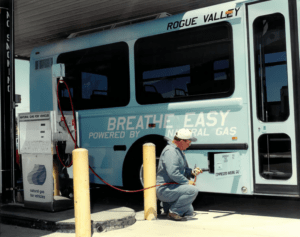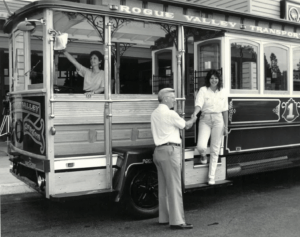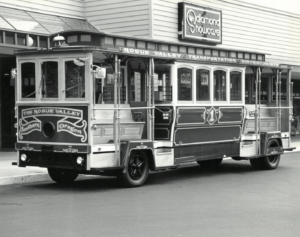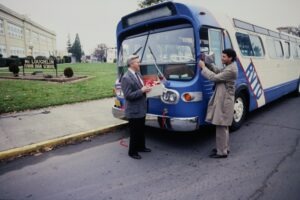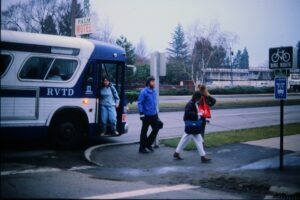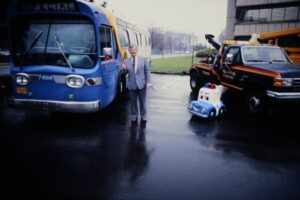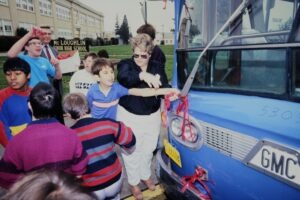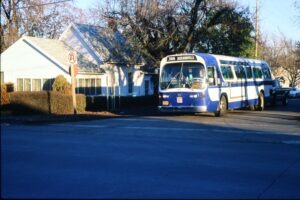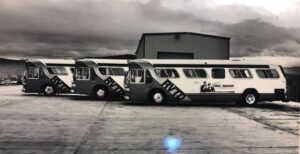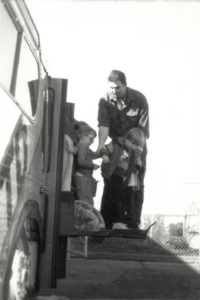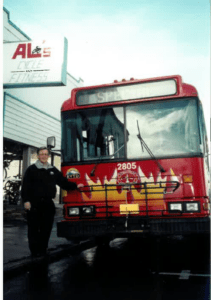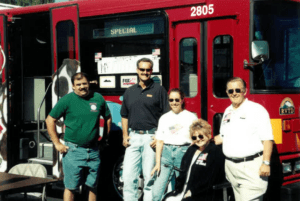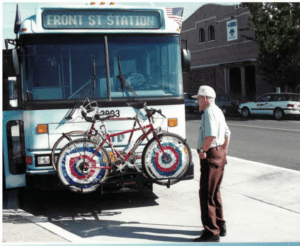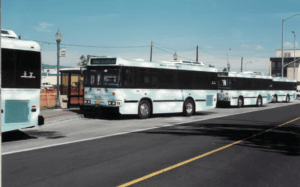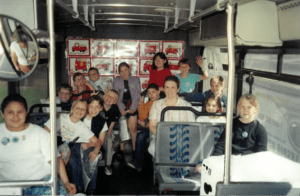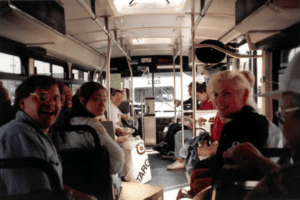Celebrating 50 Years of Service: RVTD Marks Half a Century of Connecting the Rogue Valley
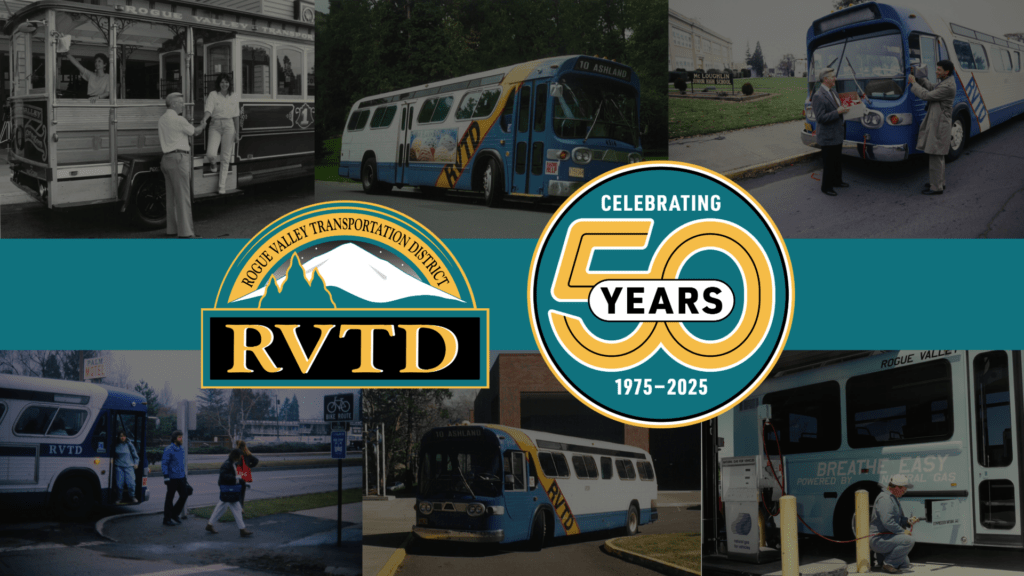
Pre-RVTD: Early Transportation in the Rogue Valley
The first efforts to establish a reliable transportation network in the Rogue Valley date back to 1891, when a single track of passenger rail line connected the county seat in Jacksonville with the railroad town of Medford. By 1915, the White Pennant Auto Line had begun running nine-passenger touring cars four times a day between Medford and Ashland. In 1920, the Ashland-Medford Auto Line charged 50 cents for the 34-minute journey, offering passengers “good, comfortable robes” to wear.
Transit During World War II and the Mid-20th Century
During the Second World War, transit in the region played a crucial role in supporting the war effort. Rogue Valley Transit provided bus service for the tens of thousands of soldiers and workers stationed at Camp White, where White City is today. Ads from the time urged residents to “Save Tires and Gasoline,” reminding them that “Your car should be used sparingly as you probably won’t be able to get a new one for a long time to come.” The round-trip fare from Camp White to Medford was just 40 cents. In the 1950s and 60s, valley transit service was offered through private firms such as Evergreen and Mt. Ashland Stage Lines.
The Formation and Early RVTD
It wasn’t until 1975 that Rogue Valley Transportation District was officially formed under a revised state law, becoming the first of its kind in Oregon. Though the district existed on paper, it took another year and a half of organizing, planning, and funding before the first two leased vans began service on July 18, 1977. With just two vehicles serving a population of 90,000, transit service in those early days was limited. However, the first five years saw steady expansion. By 1982, a zone fare system was adopted, standardized schedules were implemented, and hours of service were extended. Saturday service was launched in the summer of 1983.
RVTD Today
Since its founding, RVTD has grown into a respected leader in public transit, earning national recognition as the 2017 National Small Urban Transit System of the Year. Today, the district operates a fleet of 47 buses and 23 paratransit vans covering nearly 80 square miles and serving eight cities. RVTD serves nearly 200,000 people across Medford, Central Point, Jacksonville, Phoenix, Talent, Ashland, White City, and Eagle Point, with nearly 4,000 daily boardings.
A strong advocate for sustainability, RVTD was among the first transit agencies to introduce clean-burning compressed natural gas (CNG) in its fleet. Today, 33 of its buses run on CNG, with a significant portion of that energy sourced from renewable natural gas (RNG) through a partnership with US Gain. Additionally, RVTD’s Hybrid-Diesel Electric fleet now runs entirely on renewable diesel.
Infrastructure Growth and Investments
RVTD’s headquarters, centrally located in Medford, has grown alongside the district. Originally purchased in 1977, the Crater Lake Avenue facility was expanded in 1985 with the addition of an administration building. In 1996, RVTD moved its main transfer point from downtown Medford’s curbs to a newly developed site on Front Street. This location remains one of RVTD’s busiest, serving about one-third of its passengers daily. The site offers off-street bus bays, safe waiting areas, and expanded dispatch and customer service facilities.
The growth and expansion of RVTD have been fueled by local and state funding initiatives. Jackson County voters overwhelmingly approved a 2016 special levy to support transit services, reaffirming their commitment again in 2021. The passage of Oregon’s HB 2017 also established the Statewide Transportation Improvement Fund (STIF), which enabled RVTD to expand from 9 to 14 fixed routes in just seven years. These investments have significantly improved connectivity throughout the Rogue Valley, reducing travel time and enhancing convenience for passengers.
Looking Ahead: The Next 50 Years
As RVTD marks its 50th year, it reflects on its evolution from humble beginnings to becoming a nationally recognized transit system. Over the past five decades, RVTD has adapted to meet the changing needs of the Rogue Valley, a region whose population has nearly doubled. Looking forward, RVTD is preparing for continued growth through our 2040 Transit Master Plan. This vision outlines the need for additional routes, more frequent service, and express routes to accommodate the valley’s increasing transportation demands.
As RVTD moves into our next 50 years, it remains committed to our founding vision: “Providing quality, efficient public transportation that improves the quality of life and the environment in the Rogue Valley, connecting diverse communities to jobs, opportunities, and daily needs.” The district looks ahead to enhancing mobility, strengthening community connections, and continuing to serve as a vital part of life in the Rogue Valley.
